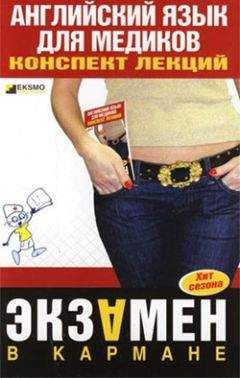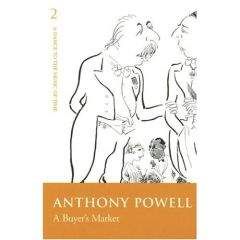Find one word, which is a little bit different in meaning from others (найдите одно слово, которое немного отличается от других по смыслу):
1) a) digestion; b) nose; c) air;
2) a) cavity; b) nose; c) organ;
3) a) breath; b) nasal cavity; c) cartilage;
4) a) mouth; b) lip; c) ear;
5) a) oxygen; b) carbon; c) hydrogen.
ЛЕКЦИЯ № 30. Nasopharynx and larynx
Nasopharynx is the first part of the pharynx.
It is lined by a pseudostratified, ciliated, columnar.
Epithelium with goblet cells: under the epithelium, a gland-containing connective tissue layer rests directly on the periosteum of the bone.
The cilia beat towards the oropharynx, which is composed of a stratified, squamous, nonkeratinized epithelium.
The pharyngeal tonsil, an aggregate of nodular and diffuse lymphatic tissue, is located on the posterior wall of the nasopharynx subjacent to the epithelium. Hypertrophy of this tissue as a result of chronic inflammation results in a condition known as adenoiditis. Larynx is a passageway that connects the pharynx to the trachea and contains the voicebox. Its walls are composed of cartilage held together by fibroela-stic connective tissue.
The mucous layer of the larynx forms two pairs of elastic tissue folds that extend into the lumen. The upper pair are called the vestibu-lar folds (or false vocal cords), and the lower pair con stitute the true vocal cords. The epithelium of the ventral side of the epiglottis and of the vocal cords is composed of stratified, squamous, nonkeratinized cells. The remainder of the larynx is lined with ciliated, pseudostrati-fied, columnar epithelium. All cilia, from the larynx to the lungs, beat upward toward the nasopharynx.
New words
nasopharynx – носоглотка first – сначала
pseudostratified – псевдомногослойный
ciliated – снабженный ресничками
columnar – колоночный
epithelium – эпителий
goblet cells – кубические клетки
gland-containing – содержащий железу
connective tissue – соединительная ткань
layer – слой
directly – непосредственно
periosteum – надкостница bone – кость
cilia beat – ресницы бьются
oropharynx – верхняя часть глотки
stratified – стратифицированный
squamous – чешуйчатый
nonkeratinized – некеритизированный
somewhere – где-нибудь, куда-нибудь, где-то, куда-то
Употребление somewhere, anywhere, nowhere или everywhere
1. Утвердительная форма: I saw this man somewhere.
2. Отрицательная форма:
I saw this man nowhere. I did not see this man anywhere.
3. Вопросительная форма:
Did you see this I man anywhere?
Вставьте somewhere, anywhere, nowhere или everywhere.
1. I put my dictionary… yesterday.
2. I can't find my bag…
3. Of course, that is because you leave your books…
4. You must go… next summer.
5. Did you go… on Sunday?
6. Let's go…
7. I cannot find my glasses…
8. I always put me gloves… and then look for them for hours.
9. There are flags, banners and flowers… оп the streets.
10. I know that these books are.
11. Do you have… for breakfast?
12. I can find her.
Переведите на английский язык.
1. На столе что-то лежит.
2. Никто об этом ничего не знает.
3. В парке везде деревья и цветы.
4. В той комнате кто-то есть.
5. Марина живет где-то в центре.
6. Там никого нет.
7. У меня несколько друзей.
8. Я могу жить везде.
9. Где-то сейчас тепло.
10. Он нигде не мог найти красные розы.
Answer the questions.
1. What is the first part of the pharynx?
2. What is the nasopharynx lined by?
3. Where does a gland – containing connective tissue layer rest?
4. Where does the cilia beat?
5. What is oropharynx composed of?
6. What is located on the posterior wall of the nasopharynx?
7. What is the reason of adenoids?
8. What does the larynx connect?
9. What does the voicebox contain?
10. What is the voicebox composed of?
Make the sentences of your own using the new words (10 sentences).
Make the sentences of your own using somewhere, anywhere, nowhere или everywhere (10 sentences).
Find one word, which is a little bit different in meaning from others (найдите одно слово, которое немного отличается от других по смыслу):
1) a) nasopharynx; b) intestines; c) pharynx;
2) a) throat; b) trachea; c) feet;
3) a) Adam's apple; b) head; c) trachea;
4) a) lungs; b) coccyx; c) bronchi;
5) a) ear; b) tonsil; c) nose.
The trachea, a hollow cylinder supported by 16-20 cartilaginous rings, is continuous with the larynx above and the branching primary bronchi below.
Mucosa of the trachea consists of the typical respiratory epitheli um, an unusually thick basement membrane, and an underlying lamina propria that is rich in elastin. The lamina propria contains loose elastic tissue with blood vessels, lymphatics, and defensive cells. The outer edge of the lamina propria is defined by a dense network of elastic fibers.
Submucosa consists of dense elastic connective tissue with serorilt-fcous glands whose ducts open onto the surface of the epithe lium.
Cartilage rings are C-shaped hyaline cartilage pieces whose free extremities point dorsally (posteriorly). They are covered by a pe-richondrium of fibrous connective tissue that surrounds each of the cartilages. Smooth muscle bundles (trachealis muscle) and ligaments span the dorsal part of each cartilage.
Adventita a consists of peripheral dense connective tissue that binds the trachea to surrounding tissues.
Primary bronchi
The trachea branches at its distal end into the two primary bronchi. Short extrapulmonary segments of the primary bronchi exist before they enter the lungs at the hilus and then branch further. The histologic structure of the walls of the extrapulmonary segment of the primary bronchi is similar to that of the tracheal wall.
New words
hollow – пустота
cylinder – цилиндр
supported – поддержанный
cartilaginous rings – хрящевые кольца
larynx – гортань
above – выше
branching – переход
primary bronchi – первичные бронхи
below – ниже
mucosa – слизистая оболочка
typical – типичный
respiratory epitheli um – дыхательный эпителий
an unusually – нетипитчно
thick – толстый
basement – основание
underlying – основной
lamina – тонкая пластинка
rich – богатый
elastin – эластин
loose – свободный
vessel – сосуд
lymphatics – лимфатический
defensive cells – защитные клетки
outer – внешний
edge – край
Много: MUCH, MANY, (A) LITTLE, (A) FEW
Единственное число: much (используется только исчисляемыми существительными).
Ex. I have much time.
Множественное число: many (используется только с неисчис-ляемыми существительными)
Ex. I have many books.
Переведите на английский язык следующие пары слов.
Много тетрадей, много молока, много воды, много дней, много газет, много мела, много снега, много лет, много картин, много музыки, много мальчиков, много девочек, много чая, много лимонов, много мяса, много комнат, много учителей, много работы, много воздуха, много птиц, много машин.
Вставьте much или many.
1. Please, don't put… peррег on the meat.
2. There were. plates on the table.
3. I never eat. bread with soup.
4. Why did you eat so. ice-cream?
5. She wrote us. letters from the coun try.
6… of these students don't like to look up words in the dictionary.
7.. in this work was too difficult for me.
8… of their answers were excel lent.
9..of their conversation was about the in stitute.
10. There are… new pictures in this room.
Answer the questions.
1. How many cartilaginous rings support the trachea?
2. What is the trachea continuous with?
3. What does mucosa of the trachea consist of?
4. What does the lamina propria contain?
5. With help of what is the outer edges of the lamina propria defined by?
6. What does submucosa consist of?
7. How are cartilage rings shaped?
8. What covers the cartilage rings?
9. What does adventitia consist of?
10. How do short extrapulmanory segments of the primary bronchi exist?
Make the sentences of your own using the new words (10 sentences).
Make the sentences of your own using MUCH, MANY, (A) LITTLE,
(A) FEW(10 sentences).
Find one word, which is a little bit different in meaning from others (найдите одно слово, которое немного отличается от других по смыслу):
1) a) vein; b) mucosa; c) trachea;
2) a) mucosa; b) organ; c) submucosa;
3) a) nerve; b) bone; c) organ;
4) a) brain; b) reflex; c) vertebra;
5) a) vision; b) eye; c) ear.
ЛЕКЦИЯ № 32. Respiratory bronchioles
Respiratory bronchioles are areas of transition (hybrids) between the conducting and respiratory portions of the airways. In addi tion to the typical bronchiolar epithelium of the terminal bron chioles, these passageways contain outpouchings of alveoli, which comprise the respiratory portion of this system.
Terminal bronchioles give rise to respiratory bronchioles.
Respiratory bronchioles branch to form two to three alveolar ducts, which are long sinuous tubes.
Alveolar sacs are spaces formed by two or more conjoined alveoli. They are lined by the simple squamous alveolar epithe lium. Alveoli are the terminal, thin-walled sacs of the respiratory tree that are responsible for gas exchange. There are approximately 300 million alveoli per lung, each one 200-300 mm in diameter. Blood-air interface. Oxygen in the alveoli is separated from hemoglobin in the red blood cells of alveolar capillaries by five layers of membrane and cells: the alveolar epithelial cell (api cal and basal membranes) and its basal lamina, the basal lami na of the capillary and its endothelial cell (basal and apical membranes), and the erythrocyte membrane. The total thick ness of all these layers can be as thin as 0,5 mm.
Alveolar epithelium contains two cell types. Type I cells completely cover the alveolar luminal surface and provide a thin surface for gas exchange. This simple squamous epithelium is so thin (-25 nm) that its details are beyond the resolution of the light microscope.
Type II cells are rounded, plump, cuboidal-like cells that sit on the basal lamina of the epithelium and contain mem brane-bound granules of phospholipid and protein (lamel lar bodies). The contents of these lamellar bodies are secreted onto the alveolar surface to provide a coating of surfactant that reduces alveolar surface tension.
Alveolar macrophages (dust cells) are found on the surface of the alveoli.
Derived from monocytes that extravasate from alveolar capillaries, alveotar macrophages are part of the mononu – clear phagocyte system. Dust cells, as their name implies, continuously remove parti cles and other irritants in the alveoli by phagocytosis.
New words
respiratory bronchioles – дыхательные бронхиолы
transition – переход hybrids – гибриды
respiratory portions – дыхательные части
airways – воздушные трассы
in addition – кроме того
bronchiolar – бронхиолярный
terminal bron chioles – предельные бронхиолы
passageway – проходы
tocomprise – включить
branch – ветвь
ducts – трубочки
sinuous tubes – извилистые трубы
to be lined by – быть выровненным
simple – простой
thin-walled – окруженный тонкой стеной sacs – мешочки
respiratory tree – дыхательное дерево
responsible – ответственный
approximately – приблизительно
hemoglobin – гемоглобин
apical – апикальный basal – основной
Мало:
little (единственное число)
few (множественное число)
Переведите на английский язык следующие пары слов.
Мало домов, мало чая, мало чашек, мало яблок, мало окон, мало бумаги, мало кофе, мало статей, мало радости, мало супу, мало деревьев, мало травы, мало детей, мало игрушек, мало света, мало парт, мало колбасы, мало сока, мало книг, мало цветов, мало соли, мало друзей, мало дворцов.
Вставьте little или few.
1. I have… time.
2. He has. English books.
3. There is. in my pen. Have you got anytink?
4. There aren't… bear in the zoo.
5. Tom Canty was the son of poor parents and had very. clothes.
6. There is too… soup in my plate.
7. The. children returned from the wood very sad.
8. There is too. light in the room.





![Rick Page - Make Winning a Habit [с таблицами]](https://cdn.my-library.info/books/no-image.jpg)